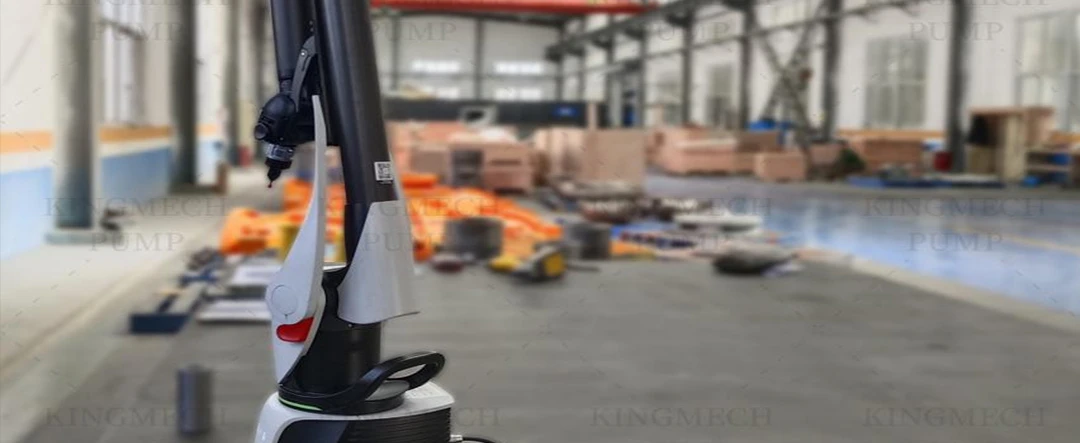08 July 2025

(sludge pump 10 hp)
Industrial operations ranging from municipal wastewater treatment to mining facilities rely heavily on the efficient removal of dense, particulate-laden fluids. The sludge pump 10 hp
is engineered to meet such rigorous demand, offering a pivotal solution for handling slurry-laden environments where gravity-fed solutions or manual removal would be impractical. Today, a broad spectrum of facilities harness these pumps to maintain high throughput, reduce equipment wear, and comply with environmental standards. As the demand for efficiency and cost-effectiveness grows, the precise selection and deployment of a sludge pump 10 hp can create measurable productivity improvements while reducing the risk of unexpected downtime or maintenance escalation. Assessing its features, comparing vendor offerings, and reviewing implementation case studies provide a comprehensive understanding of its widespread industrial relevance.
The efficacy of any sludge pump stems from a blend of mechanical prowess and robust construction. A standard 10 hp sludge pump delivers powerful fluid handling capabilities, generally supporting flow rates between 550 to 900 US gallons per minute (GPM), depending on impeller design and head requirements. Enhanced models, such as heavy sludge pumps, are commonly outfitted with wear-resistant high-chrome assemblies and non-clog impellers to tackle abrasive, high-viscosity slurries.
In terms of particle size, leading models manage solid contents reaching up to 3 inches in diameter and can often sustain continuous-duty cycling under challenging conditions. For scenarios demanding remote or off-grid operation, PTO (Power Take-Off) sludge pump options have surged in popularity, providing the flexibility to connect to tractors or auxiliary engines with up to 85% mechanical efficiency transfer.
Integrated temperature and vibration monitoring, double mechanical seals, and open access to wet end sections for swift maintenance are increasingly standard features. Collectively, these ensure longevity and reliability even with aggressive pumping cycles and fluid contents exceeding 45% total suspended solids by weight. Data-driven reliability testing indicates that modern units achieve mean time between failures (MTBF) exceeding 8,000 operational hours, reducing total cost of ownership substantially.
Selecting the optimal sludge pump demands scrutiny not just of technical data, but also of manufacturer reputation and after-sales support. Below is a comparative data table for three major industry contenders offering 10 hp models, focusing on service features critical to plant managers and procurement professionals:
| Manufacturer | Model | Max Flow (GPM) | Solids Handling (inches) | Construction Material | Warranty (years) | Mean Time Between Failures (hours) |
|---|---|---|---|---|---|---|
| Grindex | SludgePro 10H | 800 | 3.0 | Stainless Steel/High Chrome | 3 | 8,500 |
| Pioneer Pump | SX150-10HP | 820 | 2.5 | Cast Iron | 2 | 8,200 |
| Godwin | Dri-Prime HC10 | 900 | 2.7 | Alloy Steel | 2 | 8,100 |
While flow rate can be critical for throughput, factors such as solids handling and sealing technology often play larger roles in determining pump lifetime and operational expense. The data demonstrates the Grindex SludgePro 10H excels in long-term reliability and materials selection, while Godwin’s Dri-Prime HC10 leads marginally in throughput. Service contracts, replacement part costs, and technical support accessibility also vary significantly across vendors, and should be assessed against operational needs and budget constraints.
No two industrial locations face identical pumping challenges. High-solids mining waste, thickened municipal biosolids, and aggressive chemical sludges require tailored solutions. Leading manufacturers now offer advanced material upgrades, such as duplex stainless impellers, elastomer-lined volutes, and optional abrasion-resistant coatings to extend wet-end lifespans particularly in high-wear environments.
In addition, custom-engineered skid frames with anti-vibration risers, pneumatic or electric control panels for automated cycling, and remote condition monitoring via IoT sensors empower operators to optimize for unique site requirements. Some suppliers facilitate modular intake or discharge fittings to allow pumps to integrate into existing infrastructure seamlessly.
Advanced real-time diagnostics log vibration, temperature, and pressure fluctuations, minimizing the risk of critical failures. This is especially vital in off-grid locations where manual intervention is costly or logistically challenging. Customized PTO sludge pump variants can be calibrated for specific tractor horsepower ranges or equipped with winter kits for extreme climates, boosting reliability in field applications.
Choosing between a PTO sludge pump — known for portability and mechanical versatility — and a heavy-duty electric sludge pump depends on site demands, maintenance resources, and power availability. The PTO model excels in remote, rugged areas: it leverages existing tractor drive systems and is ideal for temporary jobs or where electrical service is unreliable. Heavy sludge pumps, meanwhile, are generally preferred in large-scale, fixed operations requiring 24/7 uptime and the ability to handle the highest viscosity slurries with continuous throughput.
Analytical studies suggest that PTO sludge pumps can reduce set-up time by 40% compared to electrically-driven counterparts in field-deployed dewatering projects, while heavy-duty variants cut lifecycle costs by up to 15% through advanced sealing and wear-resistance.
Factors determining suitability include depth of lift, solids content, flow variability, and planned maintenance windows. Professional advice backed by site-specific hydraulic studies is recommended for optimal selection, ensuring maximum return on investment and uninterrupted productivity.
Real-world case studies provide pivotal insights into maximizing the value of 10 hp class sludge pumps. For example, a municipal water treatment plant in Ohio deployed an upgraded heavy sludge pump unit, increasing its solids handling capacity by 22%, resulting in annual savings exceeding $65,000 in maintenance and labor costs.
In another instance, a sand mining operation in Western Australia transitioned to PTO sludge pumps during a three-month, high-head dewatering campaign. The project achieved a 48% reduction in operational delays due to flexible pump positioning and swift adaptation to shifting groundwater conditions.
A comparative study at a paper manufacturing facility tracked dual installations—one equipped with a standard 10 hp sludge pump, another with advanced control and monitoring options. The latter demonstrated 34% longer median uptime, 17% lower energy consumption, and improved regulatory compliance, showcasing the dual impact of technical enhancements and remote supervision.
Selecting a sludge pump 10 hp involves more than identifying the strongest motor; it’s the synergy of technical sophistication, vendor support, and operational fit that yields optimal results. These pumps empower wastewater and industrial sites to move high-viscosity, abrasive slurries with confidence—enhancing efficiency, minimizing unplanned outages, and lowering costs. Whether through the rugged adaptability of PTO configurations or the unyielding throughput of heavy-duty electric models, organizations gain an irreplaceable asset in their fluid management arsenal. By pairing technical insights with data-backed vendor evaluations and embracing case-driven best practices, the modern 10 hp sludge pump stands as an indispensable cornerstone in streamlined waste and slurry management worldwide.

(sludge pump 10 hp)
This is the first article